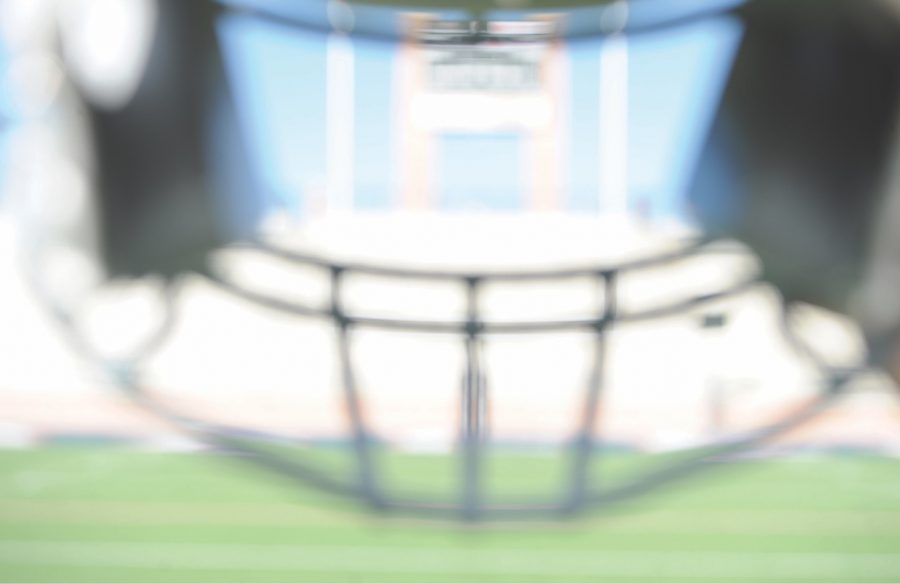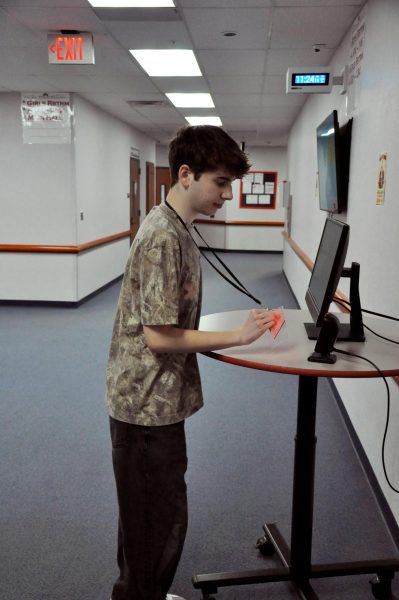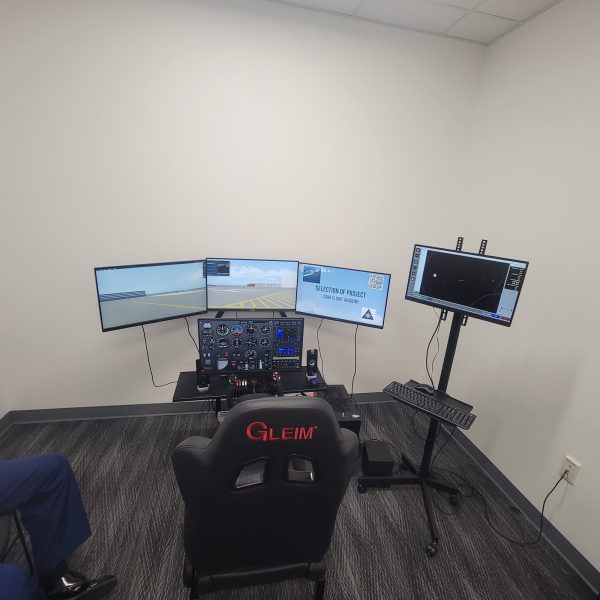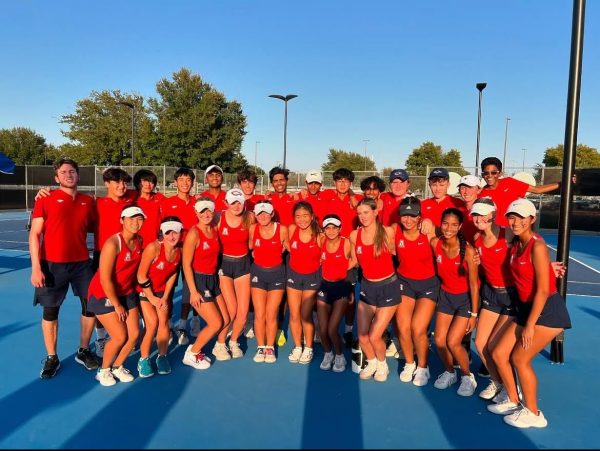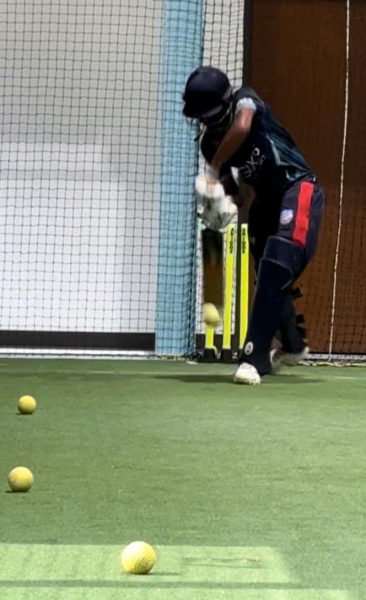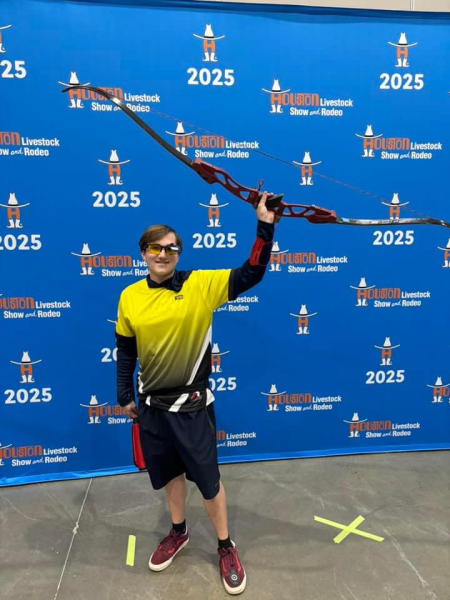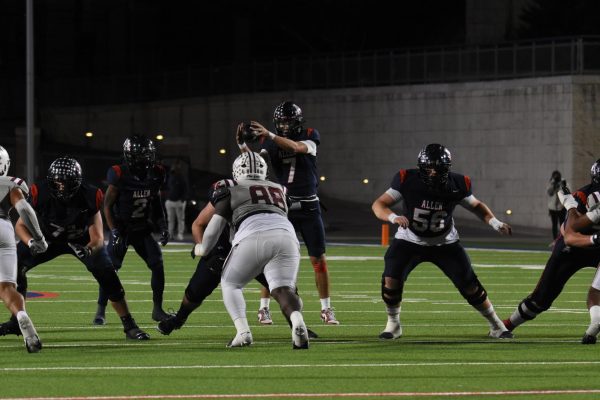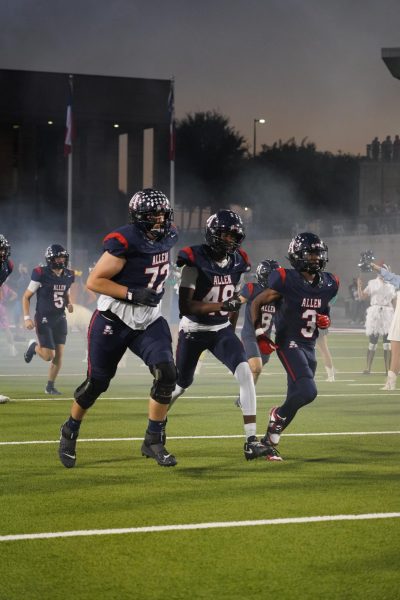Tackling Concussions
The invisible injury and how Allen is taking it head-on
A crushing blow to the head. The world temporarily goes black. Color comes back, but the scene around you appears to spin. You hear a whistle blow in the distance and feel someone lifting you back onto your feet. You stumble to the sideline and try to make sense of what just happened. You have been concussed, which can happen in any sport at any time.
The word concussion inspires controversy. As the National Football League prepares to pay an estimated $1 billion settlement to former players affected by concussions, the spotlight has never been brighter on how athletic programs are recognizing and treating concussions in all sports.
The Anatomy of a Concussion
The Center for Disease Control defines a concussion as “a type of traumatic brain injury caused by a bump, blow or jolt to the head or by a hit to the body,” resulting in the head and the brain rapidly moving back and forth. The motion causes the brain to bounce and twist within the skull, which stretches and damages brain cells and causes chemical changes in the brain.
“The biggest thing with concussions is [they’re] not something you see,” Allen High School trainer Mary Lynn Miller said. “If you have an ankle sprain, you see it’s swollen, you see it’s purple, you feel it because there’s pain there. Whereas with a concussion you can’t see the brain swollen, you can’t see that the brain is ‘limping’ around because it’s injured.”
The invisible nature of concussions can make them difficult to detect for players and medical staff alike. The speed of the game and potentially delayed symptoms can also disguise a concussion.
“I absolutely think I’ve had more concussions than I’ve been diagnosed with,” former Allen football player Cody Wheeler said. “You could just take a hard blow to the head on a normal play, and your adrenaline’s pumping in the middle of a game, and you just don’t even acknowledge the fact that it happened.”
The Effects
Wheeler was a varsity offensive lineman at Allen High School for three years. He won three state championships and was ranked as the ninth best guard in the state of Texas according to Scout.com. Wheeler received a full ride to Texas Tech University to continue his football career, but during his sophomore season, he made the decision to retire from football in order to protect his mental health.
“You don’t feel like yourself,” Wheeler said about experiencing a concussion. “You just feel different. Looking at light hurts. Focusing on anything just drives you insane. Chronic headaches. It’s really hard to figure out what’s actually wrong, because you can’t really tell.”
Wheeler was diagnosed with five concussions during his football career, suffering his first in the fourth grade and his last while in college.
“It affected my school work for about two months after my fifth concussion,” Wheeler said. “The main thing about concussions is that when you’re trying to focus and [use] cognitive functions, it just irritates you. Even now, I’ll study for 20 minutes then take a five minute break and just relax so that I don’t get any bad headaches.”
Concussions cause chemicals like calcium and potassium to rush into the brain, which results in difficulties with concentration. Concussions can also result in blurred vision.
“[My concussion] was more frustrating than anything,” Allen junior offensive lineman Collier Bowen said. “The florescent lights at the school gave me a headache. I had to stay home for a couple of days. I couldn’t do the school work for a few weeks, math in particular. They had me lay in a dark room and not mess with electronics or watch TV or anything like that for a couple of days.”
Concussions have lasting symptoms because the chemicals in the brain take time to return to their normal levels after the collision.
“[Team physician] Dr. Jim Sterling always refers to it as a snowglobe,” Miller said. “You shake up the snow globe when you get hit, and you have to let all that snow settle down. You have to let your brain heal before you go back in. If you go back in too early, it’s shaking that snow globe right back up again, and you don’t want that to happen.”
Prevention and Attention
Although concussions may be alarming, the recognition and treatment of concussions has radically improved in recent history.
“From getting your bell rung 20 years ago to now, it’s a night-and-day difference,” Miller said. “The state law here in Texas is named after one of our girl soccer players, Natasha Helmick. The law made everything uniform. If [a] health care provider or someone suspects that [an] athlete has a concussion, then they have to go get seen by a medical doctor, and that medical doctor has to clear them.”
The advancement in the concussion science and technology has allowed medical staff to more accurately determine when a concussion has occurred and when an athlete has fully recovered.
“Now [diagnosing concussions] is evidence-based, [using a variety of new testing techniques such as] using ImPACT, using King-Devick, using Sway testing to find out if they do have a concussion,” head trainer Mike Harrison said. “It’s black and white when we do tests like those. Even though you look okay, you’re still not.”
The use of data in the treatment of concussions represents a sharp change from the days of judging the health of players solely off of the eye test. According to Harrison, having hard evidence helps make it clear to athletes that they really are injured.
“It takes a lot of the pressure off us as athletic trainers,” Harrison said. “It doesn’t happen here, but it happens at other places, trainers being pressured by coaches for that athlete to play, being pressured by parents for that athlete to play. Fortunately, we have a great coaching staff here who knows when to back off.”
In addition to using advanced techniques to treat concussions, measures to prevent concussions have improved, especially at Allen.
“Our athletes are important to us,” Harrison said. “We want them to come back 10 years from now and say ‘hey’ to us and see them be successful.”
The first step of the prevention process is making sure that the athletes are familiar with the signs of a concussion and are able to self-report if they feel that they might have one.
“At the beginning of the year, all the athletes see a sports safety training video,” Harrison said. “It lists out all the symptoms of a possible concussion, so athletes are aware of what to look for [and] feel.”
The second step in the prevention process is ensuring that the athletes are properly protected from collisions and impacts to the head, which is done by providing athletes with the right equipment.
“The name of our helmets is Schutt, and it’s the best helmet on the market,” football head coach Terry Gambill said. “The helmets that our football players are wearing, they cost over $300. It’s the same helmet that they wear in the NFL and college [football], and they’re reconditioned every year. When I say reconditioned, [I mean] they are put through tests. They take them and they ram the helmets at like 60 miles an hour, and they see if they can shatter them.”
In addition to providing physical protection, coaches are protecting players in the way they teach the game. Through initiatives like USA Football’s Heads Up tackling program, players are being taught how to protect themselves from injury.
“The game is now safer than it ever has [been] because of how coaches teach tackling,” Gambill said. “We now teach tackling totally [different] than it was taught years ago. We don’t teach using your head anymore, we teach using your chest, your shoulders and your arms. I can remember [when I was] playing and everyone used to talk about ‘use your helmet’. We do not use our helmet. The game is so much safer now.”
What’s Next
Concussions are a serious health hazard and should not be taken lightly, but it’s important to recognize that competing in any form of athletics carries a health risk, whether it be a brain injury or leg injury.
“Accidents happen,” Gambill said. “We can’t control accidents. I just think that the game offers so many life lessons, and I think those values are very important to young people. Think about what football does for this community. It’s the one sport that brings this entire community together on Friday night.”
Football isn’t alone in its battle with concussions. It’s an issue that athletics as a whole is working to address.
“No sport is immune to [concussions],” Harrison said. “Soccer is number two. Cheerleading is big with concussions. You can get it in swimming. It happens.”
Concussions have existed in sports since their conception, and they will continue to exist in any environment where collisions occur. But as the science and understanding of concussions grows, the potential for progress is always present.
“I suspect 10 to 15 years from now, what we’re talking about today is going to be obsolete,” Miller said. “Hopefully it will be better — better care and better treatment and better safety. Whatever comes later on down the road to protect athletes, especially at the elite levels that they can play with, will help them not have to worry what’s going to happen after they retire, or what’s going to happen if they play sports.”

Senior Parker Primrose is a huge Denver Broncos fan, has a golden retriever for a brother and loves the movie Forrest Gump. Primrose plans to attend [insert...

Senior Jackson Stone loves sports, Mizzou, taking photos and the show "Breaking Bad." He plans to go to Mizzou to study sports journalism when he graduates.


